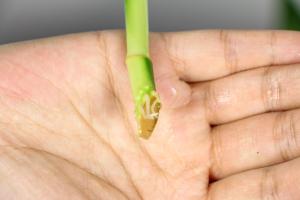Introduction
Water is essential to all living organisms, including plants. It is not only important for hydration but also influences plant growth in various ways. One of the significant effects of water on plant growth is its role in mold formation. Water mold or Phytophthora infestans is a plant pathogen that can significantly affect a plant's growth and survival. In this article, we will explore how water mold affects plant growth and ways to prevent it.
What is Water Mold?
Water mold is a pathogen that attacks plant roots and stems by consuming the nutrients and blocking the water supply to the plant. The water mold can infect a plant at any stage of its growth cycle and can lead to plant death if not treated. The disease caused by water mold is known as Phytophthora infestans or potato blight, which is a significant plant disease that has led to famines and devastation in the past.
How Does Water Mold Impact Plant Growth?
The impact of water mold on plant growth can vary depending on the severity of the infestation. In the initial stages, the plant may exhibit signs of slowed growth, yellowing of leaves, and wilting. As the mold continues to consume the nutrients and block the water supply, the plant's health deteriorates, and it may eventually die. The water mold can also cause the plant's stem to rot, and the roots can stop growing, resulting in the plant's death.
Ways to Prevent Water Mold from Affecting Plant Growth
Preventing water mold infestations is essential to ensure healthy plant growth. Here are some ways to prevent water mold from affecting plants.
1. Proper Drainage: Ensure that the soil has proper drainage to prevent water from stagnating.
2. Good Airflow: Provide good airflow around the plants to prevent the moisture from settling on the leaves and stems.
3. Proper Planting: Ensure that the plants are spaced apart, and the roots are not overcrowded, allowing them to get the necessary nutrients and water.
4. Quarantine: Inspect any new plants before planting, and keep them in quarantine for a few days to ensure they are free from any disease or insects.
5. Fungicides: Use fungicides to prevent the growth and spread of water mold. Fungicides are available in liquid and powder form.
Conclusion
Water mold can significantly affect plant growth, and preventative measures should be taken to control its spread. By implementing proper drainage, good airflow, proper planting techniques, quarantining new plants, and the use of fungicides, water mold infestations can be prevented. Healthy plants lead to a healthy environment, and it is necessary to take care of plants for a sustainable future.

 how many times do yo...
how many times do yo... how many planted tre...
how many planted tre... how many pine trees ...
how many pine trees ... how many pecan trees...
how many pecan trees... how many plants comp...
how many plants comp... how many plants can ...
how many plants can ... how many plants and ...
how many plants and ... how many pepper plan...
how many pepper plan...































